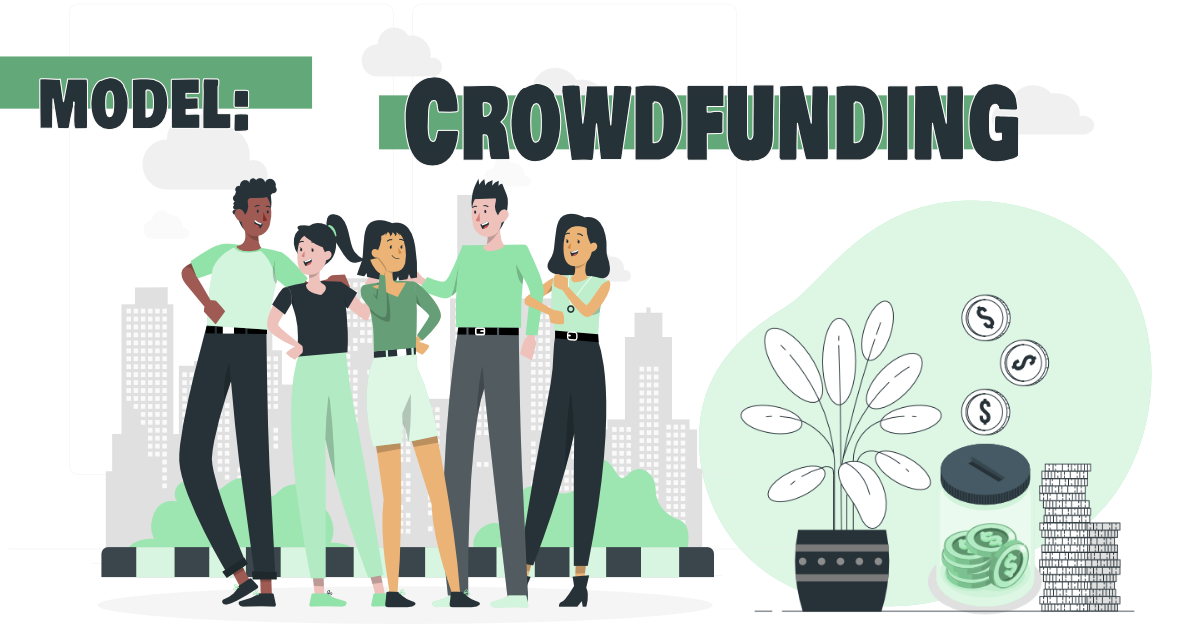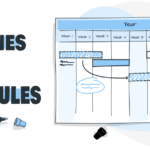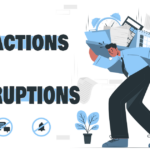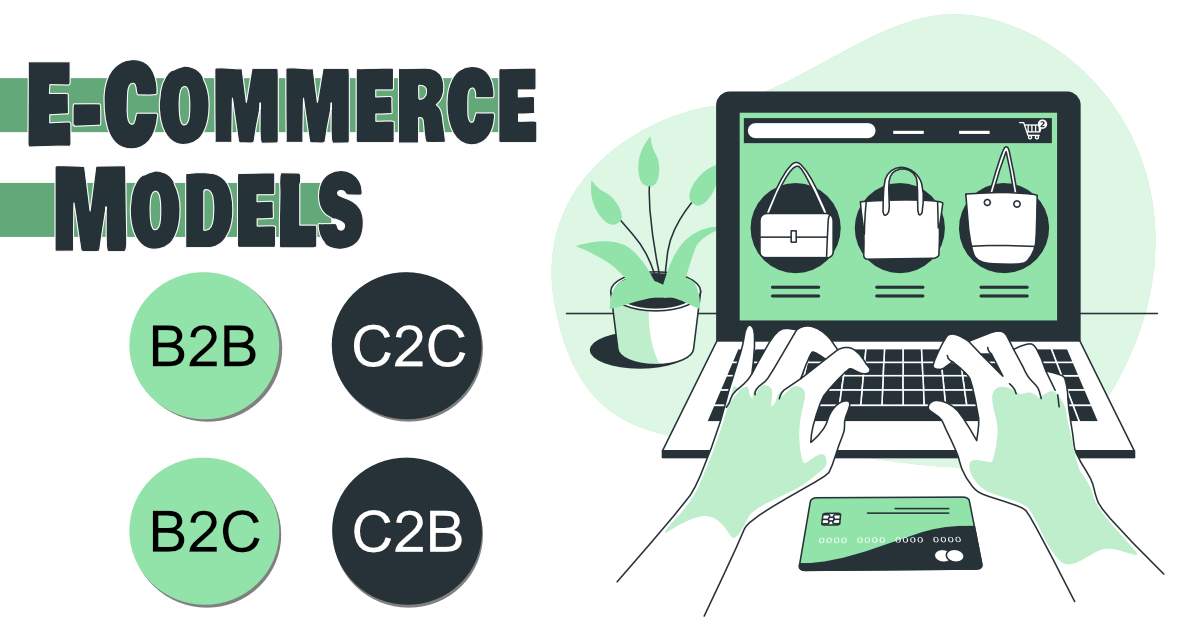Crowdfunding is a fundraising model where individuals pool small amounts of money from a large number of people to finance a new business venture, project, or product. This model allows entrepreneurs and innovators to bypass traditional sources of funding, such as banks or venture capital firms, and instead rely on the support of a community of backers. Crowdfunding campaigns can be launched online through dedicated platforms, such as Kickstarter or Indiegogo, and typically offer rewards or perks to backers in exchange for their support. The crowdfunding model has been used successfully to launch a wide range of products, from technology gadgets to films and music albums.
Overview of crowdfunding model
Crowdfunding is a type of financing model that involves pooling of funds from a large number of people, usually via the internet, to support a new business venture, creative project, or social cause. In this model, individuals or organizations can raise funds from a large number of people, usually via an online platform, to finance their projects or initiatives. Crowdfunding has become increasingly popular in recent years as a way for entrepreneurs, artists, and activists to raise funds for their projects and ideas.
The crowdfunding process typically involves the following steps:
- Idea Generation: The first step in the crowdfunding process is to come up with a compelling idea or project that you want to raise funds for. This could be anything from a new product or service, to a creative project, to a social cause.
- Platform Selection: Once you have your idea, the next step is to choose a crowdfunding platform that is right for you. There are many different platforms available, each with its own set of features, fees, and requirements. Some popular platforms include Kickstarter, Indiegogo, GoFundMe, and Crowdfunder.
- Campaign Creation: Once you have chosen your platform, the next step is to create your campaign. This involves setting a funding goal, creating a pitch video or written description of your project, and deciding on the rewards or perks that you will offer to backers.
- Marketing and Promotion: Once your campaign is live, the next step is to promote it and get the word out to potential backers. This can be done through social media, email marketing, and other forms of outreach.
- Fundraising: As backers begin to contribute to your campaign, you will start to see your funding goal grow. If you reach your goal, the funds will be released to you, and you can start working on your project. If you don’t reach your goal, you may still receive some funds, depending on the platform and the type of campaign you are running.
Best Practices
- Have a clear and compelling pitch: To attract backers, you need to have a clear and compelling pitch that explains what your project is about and why people should support it.
- Offer compelling rewards: Offering rewards or perks to backers is a great way to incentivize them to support your campaign. These rewards can range from simple thank-you notes to more elaborate perks like early access to your product or service.
- Build a community: Building a community of supporters around your campaign is key to its success. Engage with your backers regularly and keep them updated on your progress.
- Leverage social media: Social media is a powerful tool for promoting your campaign and reaching potential backers. Make sure to use it to your advantage.
- Plan for the future: Crowdfunding is just the beginning. Make sure to have a plan in place for what you will do after your campaign ends, whether it’s launching your product or service, or continuing to raise funds through other means.
In conclusion, crowdfunding is a powerful way for entrepreneurs, artists, and activists to raise funds for their projects and ideas. With the right approach and a little bit of hard work, you can successfully crowdfund your project and bring your vision to life.
Types of projects funded
Crowdfunding is a fundraising method where a large number of people contribute small amounts of money to support a project or idea. Crowdfunding is a popular way to raise funds for various types of projects, including creative, social, and business projects. In this article, we will discuss the different types of projects that can be funded through crowdfunding.
Creative Projects
Creative projects are usually projects that are related to art, music, film, or other forms of creative expression. These projects often require funding to cover the costs of production, equipment, and marketing. For example, a musician may use crowdfunding to raise money for a new album, while a filmmaker may use it to fund a new film.
Social Projects
Social projects are projects that aim to make a positive impact on society. These projects can be related to a wide range of issues, including education, health, environment, and poverty. For example, a non-profit organization may use crowdfunding to raise money for a new school in a developing country, while an environmental organization may use it to fund a new conservation project.
Business Projects
Business projects are projects that are related to starting or expanding a business. These projects can range from small startups to larger businesses. For example, a new restaurant may use crowdfunding to raise money to open its doors, while an established business may use it to expand into new markets.
Steps in Crowdfunding a Project
- Develop a clear and compelling project description.
- Set a realistic funding goal and deadline.
- Build a network of supporters and promote the project.
- Offer rewards for backers based on their level of support.
- Keep backers informed about the progress of the project.
- Use social media, email marketing, and other marketing strategies to reach a wider audience.
- Reach out to media outlets and bloggers to help spread the word about the project.
- Manage the funds raised and use them to complete the project.
Crowdfunding Platforms
Crowdfunding platforms are websites or applications that allow individuals or businesses to raise funds for their projects or causes through contributions from a large number of people, usually via the internet. These platforms serve as intermediaries between project creators and potential backers and provide various tools, resources and services to support the fundraising process. Some of the most popular and widely used crowdfunding platforms are:
- Kickstarter – a platform that primarily focuses on creative projects such as film, music, art, design, and technology.
- Indiegogo – a platform that allows people to fundraise for a wide range of projects, from creative to social causes, and also provides the option for ongoing funding for entrepreneurs.
- GoFundMe – a platform that primarily focuses on personal causes such as medical expenses, education, and volunteer trips.
- Crowdfunder – a platform that connects startups and small businesses with potential investors and offers equity crowdfunding.
- Patreon – a platform that allows artists, creators, and content makers to receive recurring payments from their supporters.
- Fundly – a platform that primarily focuses on social causes such as non-profit organizations and fundraising for schools.
- CircleUp – a platform that specializes in equity crowdfunding for consumer and retail businesses.
- Wefunder – a platform that offers equity crowdfunding for startups and small businesses.
- SeedInvest – a platform that provides equity crowdfunding for early-stage startups and growing businesses.
Best Practices
- Have a clear and well-defined project idea.
- Set a realistic funding goal and deadline.
- Offer compelling rewards for backers.
- Build a network of supporters and promote the project.
- Keep backers informed about the progress of the project.
- Use social media, email marketing, and other marketing strategies to reach a wider audience.
- Reach out to media outlets and bloggers to help spread the word about the project.
- Manage the funds raised carefully and use them to complete the project.
In conclusion, crowdfunding is a powerful tool for raising funds for creative, social, and business projects. By following best practices, project creators can increase their chances of success and make their projects a reality. Whether you’re looking to fund a new album, start a business, or make a positive impact on society, crowdfunding can help you reach your goals and make your dreams a reality.
Campaign creation and management
Campaign creation and management is an essential aspect of a successful crowdfunding project. A well-planned and executed campaign can help attract a large number of backers, increase the visibility of the project, and ultimately lead to its success. Here is a step-by-step guide to creating and managing a crowdfunding campaign:
- Define the project’s goals and objectives: Before starting the campaign, it is important to have a clear understanding of what the project aims to achieve, what its target audience is, and what the expected outcomes are.
- Choose the right platform: There are several crowdfunding platforms available, each with its own features and benefits. Choose a platform that is suitable for your project and has a proven track record of success.
- Create a compelling story: A crowdfunding campaign is essentially a story that you are telling to your potential backers. The story should be compelling, engaging, and provide a clear explanation of what the project is about, why it is important, and how it will benefit the backers.
- Create an attractive rewards structure: Backers are motivated by rewards, so it is important to create a rewards structure that is attractive and relevant to your target audience.
- Build a strong team: A successful crowdfunding campaign requires a strong team of supporters, including friends, family, and other contacts. Building a strong team can help spread the word about the campaign, increase its visibility, and ultimately lead to its success.
- Use social media: Social media is a powerful tool for promoting a crowdfunding campaign. Use social media platforms such as Facebook, Twitter, and Instagram to reach a wider audience and engage with potential backers.
- Keep backers informed: Regular updates and communication with backers is essential for maintaining their engagement and interest in the campaign. Keep backers informed about the progress of the campaign, and provide regular updates on the rewards and other aspects of the project.
- Monitor the campaign: Regularly monitor the campaign to ensure that it is on track and that the goals and objectives are being met. Make adjustments as necessary to ensure the success of the campaign.
Best practices for a successful crowdfunding campaign include creating a compelling story, providing clear and detailed information about the project, offering attractive rewards, building a strong team of supporters, and using social media effectively.
In conclusion, creating and managing a successful crowdfunding campaign requires careful planning and execution. By following the steps outlined above, and incorporating best practices, a crowdfunding campaign can be a powerful tool for generating funding and support for a project.
Marketing and advertising strategies
Marketing and advertising strategies are essential for a successful crowdfunding campaign. A well-executed marketing plan can help a project reach its funding goal and attract more backers. Here are the steps for creating an effective marketing and advertising plan for a crowdfunding campaign:
- Define your target audience: Identify the specific groups of people who are most likely to support your project. This could include friends, family members, co-workers, or other individuals with an interest in your project’s subject matter.
- Determine your marketing channels: Decide which channels are best suited for reaching your target audience. This could include social media, email marketing, online ads, or traditional advertising methods such as radio or television ads.
- Create a compelling message: Develop a clear, concise, and compelling message that communicates the purpose of your project and what makes it unique.
- Utilize social media: Utilize social media to reach your target audience and build a following. This can include creating a Facebook page or Twitter account specifically for your project, as well as using social media to share updates and news about your campaign.
- Leverage email marketing: Utilize email marketing to communicate directly with your backers and keep them informed about your campaign’s progress.
- Run online ads: Utilize online advertising platforms such as Google AdWords or Facebook Ads to reach a wider audience and drive more traffic to your campaign page.
- Offer incentives: Offer incentives to backers who support your campaign. This could include early access to your project’s final product, exclusive merchandise, or the opportunity to participate in the creation process.
- Utilize influencer marketing: Leverage the power of influencer marketing by partnering with bloggers or social media personalities who have a large following and can help spread the word about your campaign.
- Host a launch event: Host a launch event to generate excitement and bring attention to your campaign. This could be a live event or an online event such as a live stream or webinar.
- Continuously track and optimize: Continuously track and analyze the results of your marketing and advertising efforts to make data-driven decisions and optimize your strategies for maximum effectiveness.
In conclusion, a well-executed marketing and advertising plan is a key factor in the success of a crowdfunding campaign. By using a combination of social media, email marketing, online advertising, and influencer marketing, you can reach your target audience and generate the support you need to achieve your funding goal.
Funding goals and deadlines
Crowdfunding campaigns often have a funding goal and deadline, which are crucial components for their success. The funding goal represents the minimum amount of money the campaign creator needs to bring their project to life, and the deadline is the date by which they need to reach that goal. In this article, we will discuss why funding goals and deadlines are important, how to determine them, and some best practices for managing them.
Why Funding Goals and Deadlines are Important?
A funding goal and deadline serve several purposes for a crowdfunding campaign. They provide clarity and transparency for backers, indicating the amount of money required to bring the project to life and the time frame within which the funds must be raised. This gives backers confidence in the campaign and its ability to reach its goals. A funding goal also sets expectations for the campaign creator and provides them with a target to work towards. A deadline adds a sense of urgency to the campaign, encouraging backers to act quickly and make a pledge before it’s too late.
Determining Funding Goals and Deadlines
Determining the right funding goal and deadline is essential for a successful crowdfunding campaign. The funding goal should be realistic, considering the cost of materials, production, and shipping, as well as any other expenses related to bringing the project to life. Campaign creators should also take into account the market demand for their project, as well as the average pledge amount for similar campaigns. A funding goal that is too high may discourage backers from participating, while a goal that is too low may not provide enough funds to bring the project to life.
The deadline is also an important factor to consider. A deadline that is too long may result in a lack of urgency, while a deadline that is too short may create undue stress for the campaign creator. The right deadline will balance the need for urgency with the amount of time required to bring the project to life.
Best Practices
- Set realistic goals: It’s important to set a funding goal that is achievable and realistic, taking into account the costs of the project and the expected level of demand.
- Keep the deadline in mind: The deadline should be long enough to allow for a significant number of backers to participate, but not so long that the sense of urgency is lost.
- Update the campaign regularly: Regular updates and communication with backers can help maintain their interest in the campaign and encourage them to continue to spread the word.
- Use stretch goals: Stretch goals are additional funding targets that can be added if the original funding goal is reached. This can provide additional motivation for backers and encourage them to continue to support the campaign.
- Keep backers informed: Keeping backers informed of progress towards the funding goal and any updates to the deadline can help maintain their confidence in the campaign and its ability to reach its goals.
In conclusion, funding goals and deadlines are essential components of a successful crowdfunding campaign. A realistic funding goal and a deadline that balances urgency with the time required to bring the project to life can help attract and retain backers. By following best practices such as setting realistic goals, keeping the deadline in mind, and communicating regularly with backers, campaign creators can increase the chances of success for their crowdfunding campaign.
Rewards and incentives
Rewards and incentives are an important aspect of a crowdfunding campaign, as they serve as an attractive proposition for backers to support the project. The rewards and incentives offered can range from simple thank you notes to unique and exclusive experiences or products that can only be obtained through the campaign.
Here are the steps for including rewards and incentives in your crowdfunding campaign:
- Determine the budget: Before creating rewards, you need to determine your budget for the rewards. This will help you decide what you can offer, and at what price point.
- Create reward tiers: Create a range of reward tiers, each with a different reward, to appeal to backers with different budgets. Start with a low-cost reward and work your way up to more exclusive rewards.
- Offer exclusive experiences: Offer exclusive experiences related to your project to make your rewards stand out. For example, if you are creating a new product, offer a behind-the-scenes tour of the manufacturing process.
- Make rewards unique: Make the rewards unique, so that backers feel like they are getting something special that they cannot get anywhere else.
- Offer add-ons: Offer add-ons to existing reward tiers, so that backers can customize their rewards.
- Be transparent: Be transparent about the delivery date and any restrictions or limitations associated with the rewards.
- Keep it simple: Keep the reward structure simple, so that backers can easily understand what they are getting.
Best Practices
- Offer rewards that are relevant to your project
- Make the rewards appealing to a wide range of backers
- Offer limited edition rewards to create a sense of urgency
- Be transparent and clear about the delivery date and any restrictions
- Be creative with your rewards
- Test your rewards with a small group before launching your campaign
In conclusion, rewards and incentives are an essential component of a successful crowdfunding campaign. By offering a range of appealing rewards, you can motivate backers to support your project and help you reach your funding goal. However, it’s important to keep the rewards simple and transparent, and to make sure they are relevant to your project. With the right rewards and incentives, you can increase the chances of success for your crowdfunding campaign.
Payment processing
Payment processing is a critical step in the crowdfunding process, as it ensures that funds are securely collected and distributed to the project creator. Here are the steps involved in payment processing:
- Set up a payment processor: To start accepting payments from backers, a crowdfunding project must set up a payment processor that facilitates secure online transactions. Common payment processors include PayPal, Stripe, and Square.
- Collect backer information: The payment processor must collect the necessary information from backers such as name, billing address, and payment method (e.g., credit card or bank transfer).
- Verify payment: The payment processor verifies the payment information provided by the backer and checks if the funds are available.
- Authorize the transaction: If the payment information is valid, the payment processor authorizes the transaction.
- Deduct fees: The payment processor deducts its fees and any transaction charges before depositing the remaining funds into the project creator’s account.
- Release funds: The payment processor releases the funds to the project creator’s account, which can then be used to bring the project to life.
Best Practices
- Choose a payment processor with a secure platform and reliable customer support.
- Ensure that the payment processor complies with relevant regulations and security standards.
- Offer multiple payment options (e.g., credit card, bank transfer, PayPal) to make it convenient for backers to contribute.
- Clearly state the fees charged by the payment processor and any additional transaction charges.
- Regularly monitor the crowdfunding campaign’s payment information to ensure that all transactions are processed smoothly and securely.
In conclusion, payment processing is a crucial step in the crowdfunding process, and it is essential to choose a reliable and secure payment processor that complies with relevant regulations and security standards. By offering multiple payment options, clearly stating fees, and monitoring transactions, crowdfunding project creators can ensure that the funds are securely collected and distributed.
Data analysis and optimization
By using data analysis, campaign creators can make informed decisions about their campaign’s strategy and tactics, ultimately leading to better results. The process of data analysis and optimization involves the following steps:
- Data Collection: The first step is to collect data from a variety of sources, including the crowdfunding platform, social media, and other marketing channels. This data includes information on campaign performance, such as the number of views, clicks, conversions, and contributions.
- Data Cleaning: Next, the data must be cleaned and organized to ensure its accuracy and usefulness. This step involves removing any irrelevant or duplicated data, correcting errors, and ensuring that the data is in a consistent format.
- Data Analysis: With the data cleaned and organized, it is then time to analyze it. Campaign creators can use a variety of tools and techniques to analyze their data, such as spreadsheets, data visualization tools, and statistical analysis software. The goal of this step is to identify patterns and trends in the data, and to identify areas for improvement.
- Optimization: With the insights gained from data analysis, campaign creators can then make changes to their campaign strategy and tactics to optimize their results. For example, they may change the wording of their campaign description, adjust their rewards or incentives, or make changes to their marketing and advertising efforts.
- Testing and Iteration: After making changes to their campaign, creators should then test their results and repeat the process of data collection, analysis, and optimization as needed.
Best Practices
- Keep track of key metrics such as contributions, views, and clicks.
- Regularly check and update the data to ensure its accuracy.
- Use data visualization tools to help identify trends and patterns in the data.
- Test different strategies and tactics to find what works best for your campaign.
- Continuously iterate and refine your campaign strategy based on the results of your data analysis.
In conclusion, data analysis and optimization are crucial components of a successful crowdfunding campaign. By collecting and analyzing data, campaign creators can make informed decisions about their campaign strategy and tactics, leading to better results. Regular testing and iteration are key to continuously improving and optimizing a campaign’s success.
Competition and market analysis
Competition and market analysis is a critical aspect of a successful crowdfunding campaign. Understanding the competitive landscape and target market will inform strategies for marketing and advertising, rewards and incentives, and other key decisions. In this article, we will explore the steps involved in conducting a competition and market analysis for a crowdfunding campaign.
Step 1: Identify Competitors
The first step in conducting a competition and market analysis is to identify potential competitors. This includes other campaigns that are similar to your own in terms of project type, target audience, and goals. Researching competitors will give you a better understanding of what is already available in the market and how your campaign can differentiate itself.
Step 2: Analyze Competitor Strengths and Weaknesses
Once you have identified your competitors, the next step is to analyze their strengths and weaknesses. This includes reviewing their campaigns, rewards and incentives, marketing strategies, and funding goals. This analysis will provide valuable insights into what works and what doesn’t, and help you determine how your own campaign can be more effective.
Step 3: Study the Target Market
In addition to analyzing your competitors, it is important to understand your target market. This includes understanding the needs, wants, and motivations of your potential backers. This information can be gathered through online surveys, focus groups, and other market research methods.
Step 4: Identify Market Trends
It is also important to understand the current market trends, including any changes in consumer behavior and preferences. This will help you stay ahead of the competition and identify any opportunities for growth and expansion.
Step 5: Evaluate the Potential for Success
Using the information gathered in the previous steps, you can now evaluate the potential for success of your campaign. This includes analyzing the size and growth of the market, the competition, and your target audience. This information will help you make informed decisions about your marketing and advertising strategies, rewards and incentives, and other key aspects of your campaign.
Best Practices
- Regularly monitor and update your competition and market analysis to ensure it remains relevant and accurate.
- Use tools such as Google Trends and SEMrush to gather information on market trends and competitor analysis.
- Consider conducting focus groups and online surveys to gather valuable insights into your target audience.
Actionable Tips
- Offer unique rewards and incentives that set your campaign apart from competitors.
- Develop a targeted marketing strategy that speaks directly to your target audience.
- Utilize social media and other digital channels to reach potential backers and build a community around your campaign.
In conclusion, competition and market analysis is an essential part of a successful crowdfunding campaign. By understanding your competitors, target market, and market trends, you can make informed decisions about your campaign and increase your chances of success. Regularly monitoring and updating your analysis will help ensure that your campaign remains relevant and effective.
Backer management and communication
Backer management and communication are crucial components of a successful crowdfunding campaign. Proper backer management and communication can help build trust and foster relationships with backers, which can lead to higher levels of support and better chances of success. In this article, we will discuss the process and steps involved in backer management and communication in the context of crowdfunding.
What is Backer Management and Communication?
Backer management and communication refers to the process of maintaining relationships with backers throughout a crowdfunding campaign. This includes keeping them informed about the progress of the project, addressing their questions and concerns, and providing rewards and incentives for their support.
Why is Backer Management and Communication Important?
Backer management and communication is important for several reasons. First, it helps build trust and relationships with backers, which can lead to increased levels of support. Second, it helps to maintain transparency and accountability, which is important for building credibility and trust with backers. Third, it can help to address any questions or concerns that backers may have, which can prevent misunderstandings and minimize the risk of negative feedback.
How to Manage Backers and Communicate with Them?
The following are the steps involved in backer management and communication:
- Set up a communication plan: Create a plan for how you will communicate with your backers throughout the campaign. This can include regular updates, newsletters, and Q&A sessions.
- Keep backers informed: Provide regular updates to your backers about the progress of your project. This can include updates on milestones, challenges, and plans for the future.
- Address questions and concerns: Be available to answer questions and address concerns from your backers. This can include responding to messages and comments on your campaign page, as well as participating in Q&A sessions.
- Provide rewards and incentives: Fulfill your promises to backers by providing the rewards and incentives that you have offered. This can include physical products, digital content, or special access to events.
- Build a community: Foster a sense of community among your backers by encouraging them to interact with each other and with you. This can include creating discussion forums or hosting events.
Relevant Examples and Real-Life Applications
A good example of effective backer management and communication is the Pebble Time smartwatch campaign on Kickstarter. The Pebble team provided regular updates to backers throughout the campaign, answered questions and addressed concerns in a timely manner, and provided rewards and incentives for their support. This resulted in a successful campaign that raised over $20 million from over 78,000 backers.
Another example is the Exploding Kittens card game campaign on Kickstarter. The creators of the game kept backers informed about the progress of the project, provided regular updates and Q&A sessions, and fulfilled their promises to backers by providing rewards and incentives. This resulted in a successful campaign that raised over $8 million from over 220,000 backers.
Best Practices and Actionable Tips
- Be transparent: Be transparent with your backers about the progress of your project and address any questions or concerns that they may have.
- Be responsive: Respond to messages and comments from your backers in a timely manner and participate in Q&A sessions.
- Provide regular updates: Provide regular updates to your backers about the progress of your project, including milestones, challenges, and plans for the future.
- Fulfill your promises: Fulfill your promises to backers by providing the rewards and incentives that you have offered.
- Build a community: Foster a sense of community among your backers by encouraging interaction and discussion.
In conclusion, backer management and communication is a crucial aspect of a successful crowdfunding campaign. It is important to maintain open and transparent communication with backers, keep them informed of the campaign’s progress, and address any concerns or questions they may have. By utilizing various tools and strategies such as regular updates, social media, email, and backer surveys, campaigns can effectively engage and retain their backers, leading to a successful outcome. Additionally, it is advisable to have a plan in place for handling and fulfilling rewards and perks, to maintain positive relationships with backers even after the campaign has ended. Overall, investing time and effort into backer management and communication can pay off in the long run, by building a strong community of supporters who believe in the project and are willing to contribute to its success.
Compliance with regulations and laws
Crowdfunding is a model of fundraising that has grown rapidly in recent years. The use of technology and the internet has made it easier for entrepreneurs and organizations to raise funds from a large number of backers. However, as the industry has grown, governments and regulatory bodies have stepped in to ensure that the interests of backers are protected and that crowdfunding platforms operate within the boundaries of the law.
Why is compliance important?
Crowdfunding regulations and laws are in place to protect the interests of backers. This includes ensuring that platforms are transparent about how they use the funds raised, that projects are accurately represented, and that platforms are not engaging in any fraudulent activities. Compliance with regulations and laws also helps to build trust between backers and platforms, making the crowdfunding model more sustainable and reliable in the long run.
Steps to comply with regulations and laws
- Understand the regulations and laws that apply to your platform: Regulations and laws can vary depending on the location of the platform and the type of crowdfunding campaign. It is important to understand what regulations and laws apply to your platform and to make sure that you are complying with them.
- Make sure that you have all necessary licenses and permits: Crowdfunding platforms may need to obtain licenses and permits in order to operate legally. This may include registering with financial regulatory bodies, obtaining a business license, and obtaining a tax ID number.
- Have a clear and transparent refund policy: Crowdfunding regulations often require platforms to have a clear and transparent refund policy. This includes a process for handling refunds if a project is cancelled, fails to deliver rewards, or otherwise does not meet its obligations.
- Have clear and accurate information about projects: Regulations often require platforms to have accurate information about the projects they host. This includes information about the risks and rewards associated with each project, as well as a clear representation of the project’s goals and timelines.
- Implement a system for verifying the identity of backers: Some regulations require platforms to verify the identity of backers. This helps to prevent fraudulent activity and to ensure that the platform is in compliance with anti-money laundering laws.
- Regularly review and update your policies: Crowdfunding regulations and laws can change, so it is important to regularly review and update your policies to make sure that you are in compliance.
Best Practices
- Be transparent about how you use funds raised: Backers want to know how their money is being used, so it is important to be transparent about how funds raised through crowdfunding campaigns are being used.
- Communicate regularly with backers: Regular communication with backers helps to build trust and ensures that backers are informed about the progress of projects.
- Use a secure payment processing system: Security is a top concern for backers, so it is important to use a secure payment processing system that protects their personal and financial information.
- Work with a lawyer or legal advisor: Crowdfunding regulations and laws can be complex, so it is a good idea to work with a lawyer or legal advisor to ensure that you are in compliance.
In conclusion, compliance with regulations and laws is an important part of running a successful crowdfunding platform. By understanding the regulations and laws that apply to your platform, having clear and transparent policies, and regularly reviewing and updating your policies, you can help to build trust with backers and ensure that your platform operates within the boundaries of the law.
Resources and References
- “Crowdfunding: The Corporate Era” by Scott Steinberg
- “Crowdfunding: A Guide to Raising Capital on the Internet” by J. Kim
- “The Crowdfunding Handbook: Raise Money for Your Small Business or Start-Up” by Scott Steinberg and Joel Hughes
- “Crowdfunding: The Corporate Era” by Diane Mulcahy
- “Crowdfunding: A Guide to Raising Capital on the Internet” by Joel Margulis
- “Crowdfunding for Social Good: Financing Your Mark on the World” by J.D. Marhevko and M.L. Baer
- “The Crowdfunding Handbook: Raise Money for Your Small Business or Start-Up” by Derek Semmel
- “The Crowdfunding Revolution: How to Raise Venture Capital Using Social Media” by J.D. Rivkin
- “Crowdfunding: How to Raise Money for Your Startup” by J. Andrew Ross
- “The Crowdfunding Handbook: Raise Money for Your Small Business or Start-Up” by Slava Rubin
- “The Crowdfunding Bible: How to Raise Money for Any Startup, Video Game, or Project” by Scott Steinberg
- “Crowdfunding: The Corporate Era” by G. S. Rose
- “The Crowdfunding Revolution: Social Networking Meets Venture Financing” by Kevin Lawton and Dan Marom
- “Crowdfunding: A Guide to Raising Capital on the Internet” by Daniel Fleisher and Scott Walkins
- “Crowdfunding for Dummies” by Sherwood Neiss, crowdfunding expert and co-author of the JOBS Act
- “The Crowdfunding Handbook: Raise Money for Your Small Business or Start-Up” by Scott Steinberg
- “Kickstarter Power: The Ultimate Crowdfunding Campaign Kit Also for Indiegogo” by Chandler Taylor
- “Crowdfunding for Dummies” by Sherwood Neiss, Jason W. Best, and Zak Cassady-Dorion
- “The Crowdfunding Handbook: Raise Money for Your Small Business or Start-Up” by Denise A. Gosnell and Richard L. Jacobi
- “Crowdfunding: A Guide to Raising Capital on the Internet” by Joseph Hogue
- “Data-Driven: Creating a Data Culture” by Hilary Mason and DJ Patil
- “Data Analytics Made Accessible” by Anil Maheshwari
- “Data Science for Business: What You Need to Know about Data Mining and Data-Analytic Thinking” by Foster Provost and Tom Fawcett
- “Crowdfunding: The Corporate Era” by Gerd Leonhard and Tom Raftery
- “The Crowdfunding Revolution: How to Raise Venture Capital Using Social Media” by Kevin Lawton and Dan Marom













